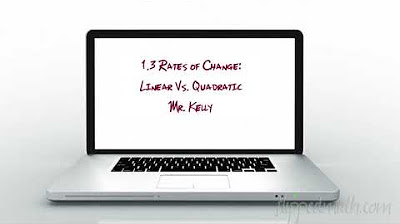16.ARR Calculation When Scrap & Working Capital is given from Capital Budgeting-Financial Management
Summary
TLDRIn this lesson, the instructor explains how to calculate the Average Rate of Return (ARR) for two investment proposals. The process involves calculating the average annual profit and average investment using provided figures for cost, scrap value, and working capital. By following clear formulas, the instructor demonstrates how to compute ARR and recommends choosing the proposal with the higher ARR. The lesson concludes with a recommendation for Proposal 2, which has a higher ARR of 52.32% compared to Proposal 1’s 46.5%. The next class will cover Net Present Value (NPV) and Internal Rate of Return (IRR) calculations.
Takeaways
- 😀 The formula for calculating Average Capital when scrap value and working capital are provided is: (Cost - Scrap Value) / 2 + Working Capital + Scrap Value.
- 😀 The average annual profit is calculated by dividing the total profit by the number of years. For example, 6 lakh divided by 4 years equals 1.5 lakh for Proposal 1.
- 😀 To calculate the average investment, use the formula: (Cost - Scrap Value) / 2 + Working Capital + Scrap Value. For example, for Proposal 1, the average investment is 4.3 lakh.
- 😀 When working capital and scrap value are given, the average investment is calculated using the formula mentioned above, which includes the scrap value and working capital.
- 😀 ARR (Average Rate of Return) is calculated by dividing the average annual profit by the average investment and then multiplying by 100 to get a percentage.
- 😀 For Proposal 1, the ARR calculation gives a result of 46.5%, while for Proposal 2, the ARR is 52.32%.
- 😀 Proposal 2 is considered more profitable since its ARR (52.32%) is higher than Proposal 1’s ARR (46.5%).
- 😀 The problem involves estimating the ARR for two proposals based on given costs, scrap values, and cash inflows for several years.
- 😀 In calculating the ARR, if there are no cash inflows in the last year (as in Proposal 1), only the years with inflows are used in the calculation of average profit.
- 😀 The key takeaway is that when scrap value and working capital are given, specific formulas must be used for calculating average investment and profit, which then lead to the ARR calculation.
Q & A
What is the formula used to calculate the average investment when scrap value and working capital are given?
-The formula for average investment is: (Cost - Scrap Value) ÷ 2 + Working Capital + Scrap Value.
What are the given values for both proposals in the problem?
-For both proposals, the investment cost is ₹3,00,000, scrap value is ₹60,000, and working capital is ₹2,50,000.
How are the average annual profits calculated for Proposal 1 and Proposal 2?
-For Proposal 1, the total inflows of ₹6,00,000 are divided by 4 years to give an average annual profit of ₹1,50,000. For Proposal 2, the total inflows of ₹9,00,000 are divided by 4 years to give an average annual profit of ₹2,25,000.
How is the average investment for Proposal 1 calculated?
-The average investment for Proposal 1 is calculated as follows: (₹3,00,000 - ₹60,000) ÷ 2 + ₹2,50,000 + ₹60,000 = ₹4,30,000.
Why was the number of years for calculating average profit changed from 4 to 3 for Proposal 1?
-The calculation for Proposal 1 uses 3 years instead of 4 because there is no cash inflow in the 4th year, which affects the total profit calculation.
What is the ARR formula, and how is it applied to the proposals?
-The ARR formula is: (Average Annual Profit ÷ Average Investment) × 100. For Proposal 1, it is (₹1,50,000 ÷ ₹4,30,000) × 100 = 46.5%. For Proposal 2, it is (₹2,25,000 ÷ ₹4,30,000) × 100 = 52.32%.
Which proposal has the higher ARR, and what does this mean?
-Proposal 2 has a higher ARR of 52.32%, meaning it is more profitable than Proposal 1, which has an ARR of 46.5%.
What is the significance of the ARR in determining which proposal is more profitable?
-The ARR indicates the return expected from an investment relative to its average cost. A higher ARR suggests a more profitable investment, making Proposal 2 the better choice.
What is the relationship between scrap value and working capital in the average investment formula?
-Both scrap value and working capital are added into the average investment formula to ensure that both the initial investment and the liquid assets are considered in the return calculation.
What did the lecturer mean by stating 'ARR is the average rate of return you can expect from an investment over its lifetime'?
-The lecturer refers to ARR as the percentage return on an investment, averaged over the project's life, providing a measure of its overall profitability.
Outlines

This section is available to paid users only. Please upgrade to access this part.
Upgrade NowMindmap

This section is available to paid users only. Please upgrade to access this part.
Upgrade NowKeywords

This section is available to paid users only. Please upgrade to access this part.
Upgrade NowHighlights

This section is available to paid users only. Please upgrade to access this part.
Upgrade NowTranscripts

This section is available to paid users only. Please upgrade to access this part.
Upgrade NowBrowse More Related Video

#3 Average Rate of Return (ARR) - Investment Decision - Financial Management ~ B.COM / BBA / CMA

Taxa de Variação da Função Afim

#1 Capital Budgeting | SYBCOM | TYBAF | SEM 3 | SEM 5 | F M | Siraj Shaikh | B.Com/M.Com/CA/CS/CWA

Eletrônica de Potência 1: (A.10) Retificador Monofásico Não Controlado de Onda Completa - Carga RL

Calculus AB/BC – 2.1 Defining Average and Instantaneous Rate of Change at a Point

AP Precalculus – 1.3 Rates of Change Linear and Quadratic Functions
5.0 / 5 (0 votes)